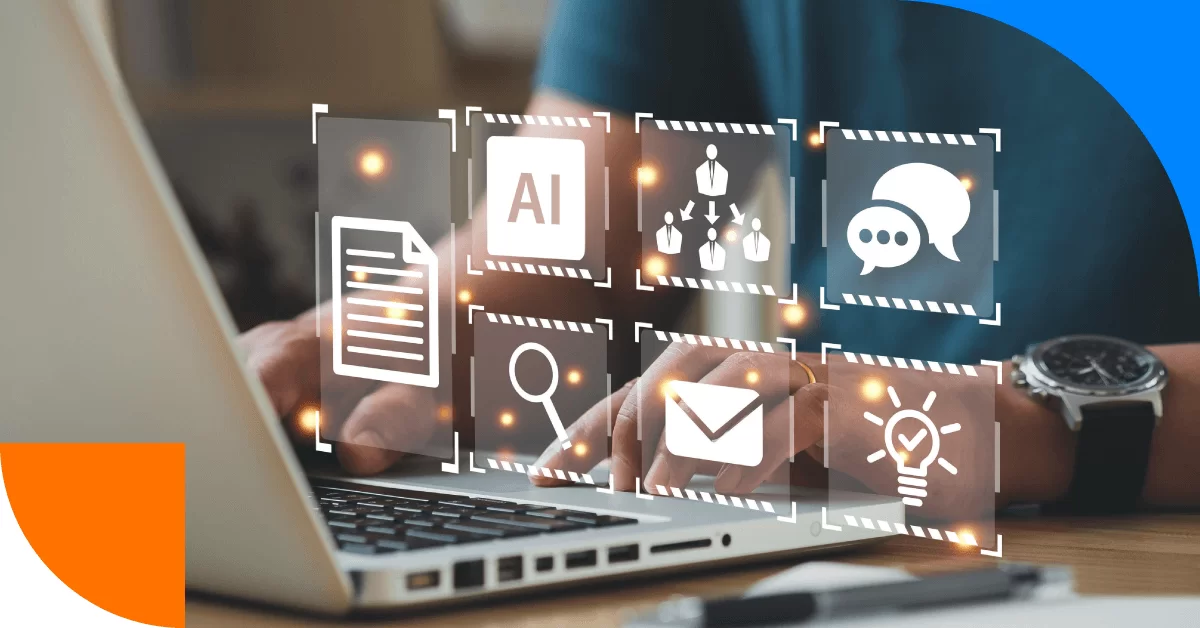Sure, animals can be curious too, but not to the point of spending billions to send a robot to Mars just to see what it’s like up there (heck, even the name of the original Mars rover was “Curiosity”).
Add to that a rapidly changing social, technological and business landscape, like the one we have had for the last several decades, and the the idea that one’s learning should be confined to some particular time at school suddenly seems very bizarre and antiquated.
Lifelong education to the rescue then; which, in a corporate training context, translates to employee continuous training.
In this post we’ll examine the reasoning behind, and the advantages of employee continuous training for the modern enterprise and organization.
The Benefits Of Continuous Training
The benefits of employee training and development are widely known. But who said it should be limited to onboarding or compliance training? As the organization grows and the employees grow with it, the training needs change and the skills the employees should be competent with get constantly updated, as well. But what are the actual advantages of continuous training both for the business and the employees?
The market is not static
…and neither should your employees’ skills be.
Gone are the days when an office worker could look forward to a lifetime of professional relevance based on their high-school or university education, plus the occasional seminar.
Just consider this; a typical professional career spans about a 30-40 years range. But even going 20 years back, the world was a totally different landscape: Google (1998), YouTube (2005), social websites (mid-00s), mobile broadband (ditto), the modern smartphone (2007), all of those things that seem to have been with us forever, didn’t exist. 30 years ago? MS-DOS and the VHS tape were still a thing.
With most industries (manufacturing, transportation, services, software, etc.) constantly changing, businesses should be prepared to adapt to these ever changing conditions or perish. You can’t serve a 2016 clientele with 2006 approach. Heck, even 2010 might be stretching it — whole multi-billion dollar industries have risen and fallen since then (case in point: the tablet industry).
The market is not static and neither should your employees’ skills be.Share on
A comprehensive employee training and development plan that’s continuously developed, revised and adapted for new conditions, markets and challenges, is a sine qua non (that’s latin for “you should do it”) for a competitive business.
Law is not static either
Along with the market changes and technological progress, the law changes too.
And while some industries have it easy, others drown in a sea of ever newer and more complex regulations that they have to comply with, covering all aspects of business; from ethics to packaging and carbon emissions.
Sending employees off for some annual seminar, or organizing in-house classroom based courses won’t really cut it from a business disruption and cost aspect. Especially if your organization regularly hires new people or depends on a workforce that can vary with the seasons (e.g. in the hospitality industry).
Here, a combination of an always-on online-training program, with the occasional required hybrid (blended) learning session can help ensure your staff is correctly trained in all the latest rules and regulations.
Take advantage of the latest technology
A mere 15 years ago only well paid businessmen had laptops. Nowadays pretty much everybody has one. What almost everybody also has is a mobile broadband plan — which, combined with a laptop, gives them the ability to work, and communicate with other employees, from anyplace, at anytime.
That’s something that, today, every business executive takes advantage of: finalizing a presentation in the back of a cab, working on a business plan while on an airplane, logging in to give some instructions for handling a major client while enjoying their vacation in Paris. Yeah, every executive does those kind of things now.
At some point in the past, though, there were only a few business executives with laptops. A few that were ahead of the curve. And that — understanding and adopting early a then “cutting edge” technology — gave them a tremendous boost in their career opportunities.
Of course that’s a “been there, done that” kind of affair. Having a laptop today is not an advantage, it’s a prerequisite.
But what about today’s cutting edge technologies? From wearables and VR, to microlearning, the Internet of Things, and Augmented Reality? Or any of the numerous new technologies emerging in any particular field (e.g. React, ES6/7, WebGL, WebRTC, and the like) in the web development industry?
How many of those have you and your employees adopted already? One? None? I can guarantee you that your competitors, especially the younger upstarts, have already one or more under their belt.
A continuous training program should, and will, ensure that your employees are always up to date with the latest technological developments — not just with the skills it takes to do their job well now, but also with the skills it will take to do their job well tomorrow.
Use it or lose it
This is another major reason why employee continuous training is so important: people forget.
This is another major reason why employee continuous training is so important: people forget.Share on
Of course, some of the stuff in your employee training program they will use day in and day out during their normal work duties. Those they will remember.
But what about the other stuff, things that they need to only use occasionally, but whose irregular use can still make a big difference to your bottom line? Consider handling a particular, infrequent, but lucrative, client demand.
In order for us humans to maintain our knowledge and skills, we need to refresh our memories and practice regularly. See, most business skills are not like “riding a bike” — something dead simple that stays with you forever. Rather, they are like playing the piano, or like those french lessons your mom had you take: easily forgotten, difficulty recovered. “Use them or lose them”, as the saying goes.
Even as soon as a year in their job, most of your employees would have forgotten 50% (or more) of their employee onboarding program. Unless, of course, you have a system for employee continuous training in place, and have them go through the material at regular intervals.
It makes learning the norm rather than the exception
A one-off (literally, or annual etc.) set of employee training courses and seminars will always feel as some kind of a special situation — something your employees just have to suffer for a while, instead of part of the regular workflow.
Making training a part of a longer talent development process signals to employees that this is something normal, a part of everyday business life, as important as their regular work.
If you also get them to associate this long-running training regime with concrete career advancement opportunities, it will make them more incentivized and eager to participate in and pay attention to your learning and talent development program.
Attract better talent …
The best employees are those willing to learn and grow.
The best employees are those willing to learn and grow.Share on
By investing in a continuous employee education scheme, you don’t just train your own talent — you also attract new talent who values such progressive businesses that stay on the cutting edge. And if this is not one of the most important continuous training advantages, then what is?
This is why, for example, programmers prefer jobs that give them the ability to work with the latest and greatest technologies to working with some legacy programming language (COBOL, anyone?) — even if the latter pays better.
Technology adoption is part of your company’s coolness factor, but it also has real substance. If young people know that your company has adopted several cutting edge technologies, they will flock to your HR department for a chance to work with it.
… and enjoy better senior employee retention too.
Employees might leave a company for many reasons — with money only being one of them, not even the most important one, unless they are seriously underpaid.
Job satisfaction is a big factor in this.
Job satisfaction is a big factor in this.Share on
A continuous training regime can help increase job satisfaction levels, by minimizing rot, giving your staff new skills and career advancements opportunities, and enabling them to be better at what they do.
Same as with attracting new talent, having your company be savvy about the latest technologies signals your staff that you invest in the organization’s future, as opposed to being some kind of dinosaur stuck in the past (I’m looking at you, Yahoo).
Instead of forcing your employees to jump ship to keep their skills relevant, you give them new learning opportunities within the organization that they already work at — something that employees will always value.
Knowledge retention AND employee engagement? Can the benefits of lifelong learning get any better than that?
Revamp all the things!
Not all skills learned in a continuous education program (or even in a one-off training program) will be useful to your employees in their everyday activities.
A lot of it will, however — making all the difference in their productivity and, hence, your bottom end.
One of the best benefits, though, is that a continuously educated staff will be more able to recognize weaknesses in your existing workflows, and opportunities for change and disruption.
After all, if all one knows is how things “were always done around here”, then it will obviously be hard to even imagine, and much less attempt doing anything differently.
A continuously educated employee, on the other hand, will start seeing cases where his new skills can make a difference. Your job will be to encourage this kind of creative thinking, and try to revamp your existing business models and workflows by adopting the most revolutionary and market-worthy of such disrupting ideas.
Reaping The Benefits Of Continuous Training For Employees
Solon of Athens (638–558 BC), the ancient Greek statesman, lawmaker, and philosopher, once famously noted that “I always learn as I age”.
That’s something that we should all strive for. And the continuous training benefits are too many not to!
Continuous employee education, especially with the help of the appropriate Learning and Talent Development Platform, such as eFront, helps make this ongoing learning process formal, cost-effective, and beneficial — not just for your employee development, but for the overall success of your business.


